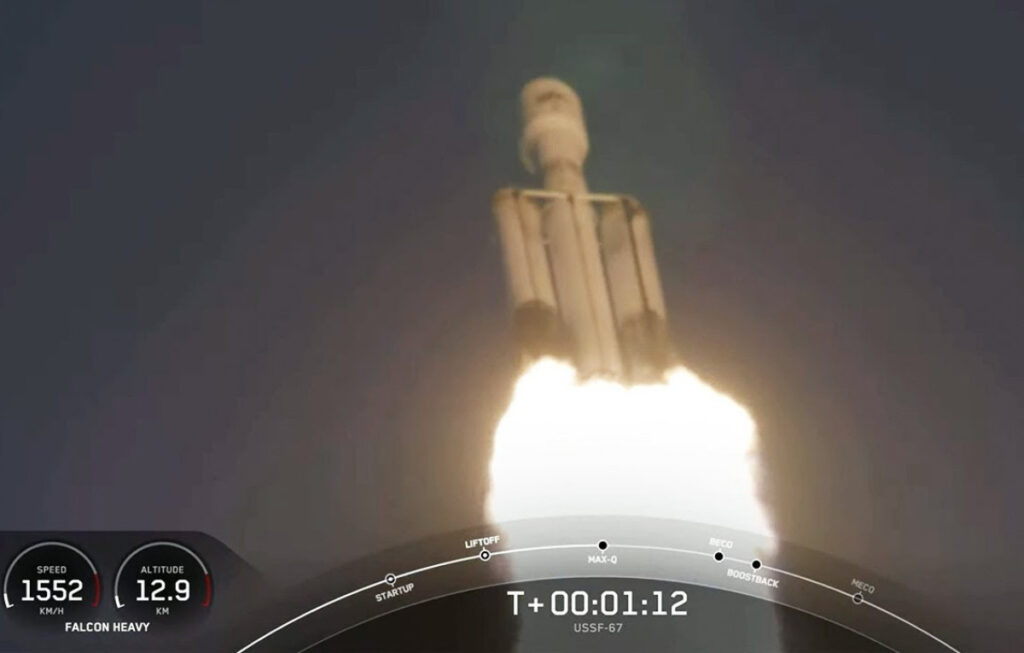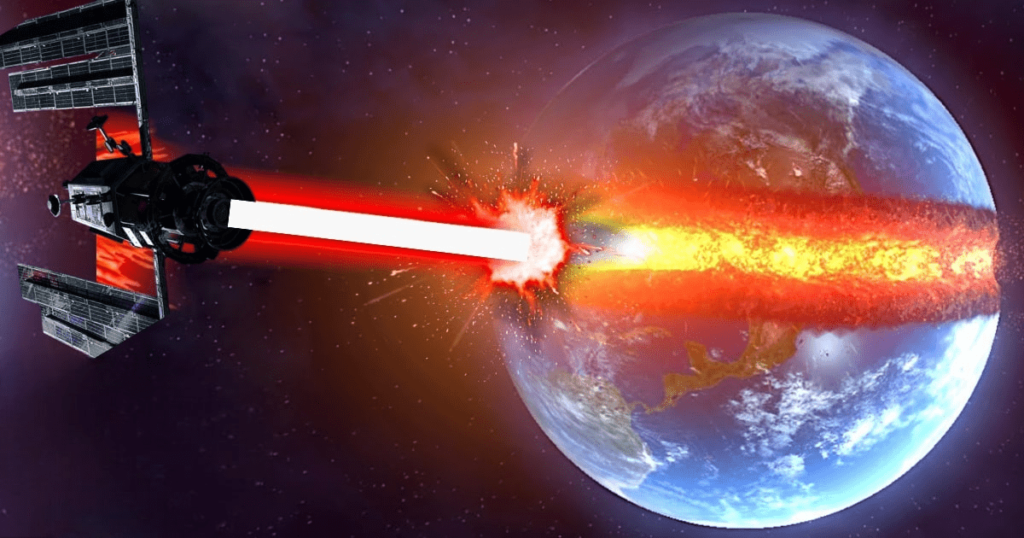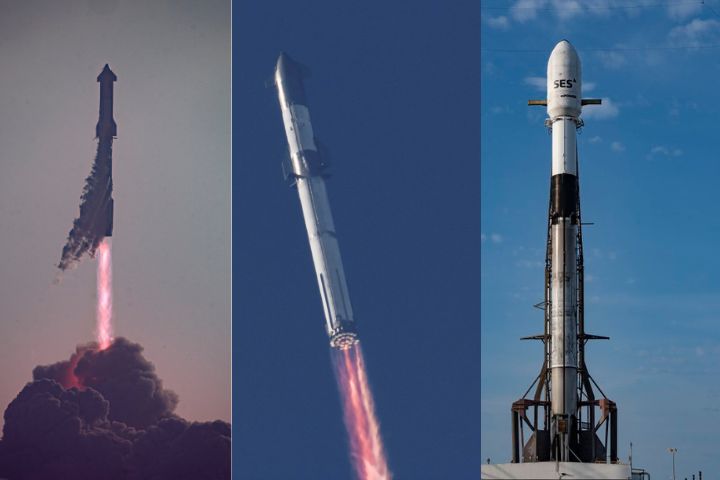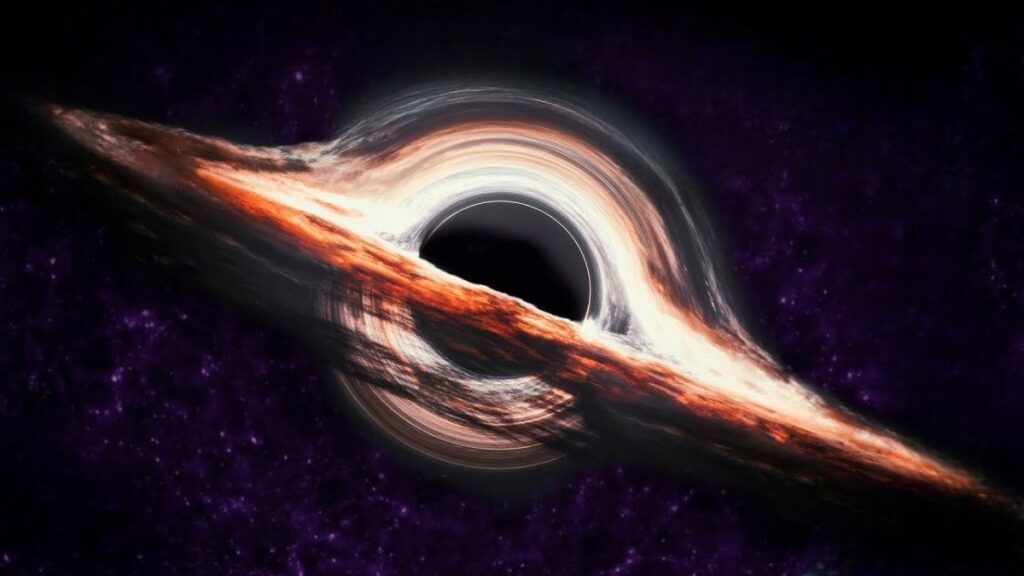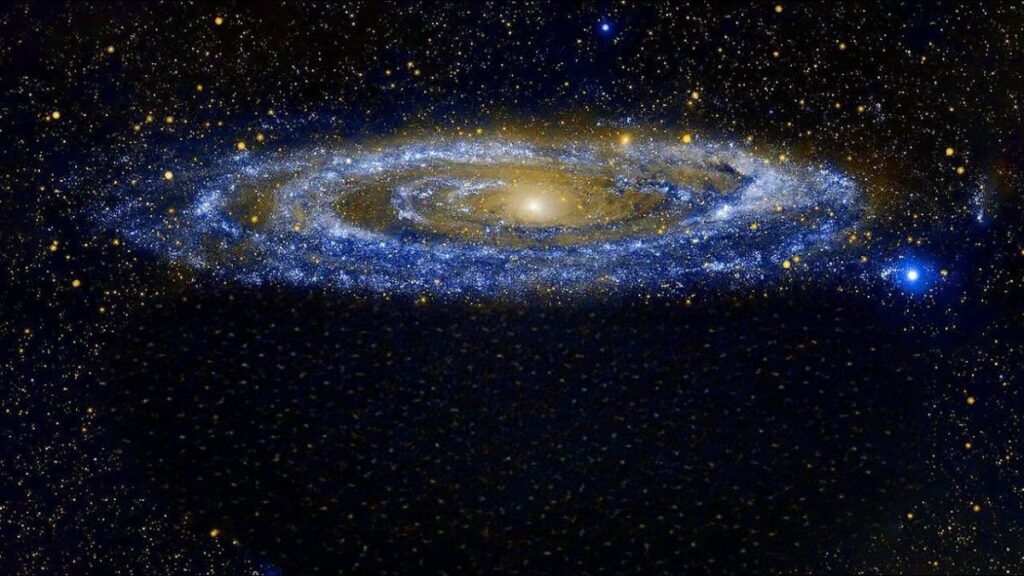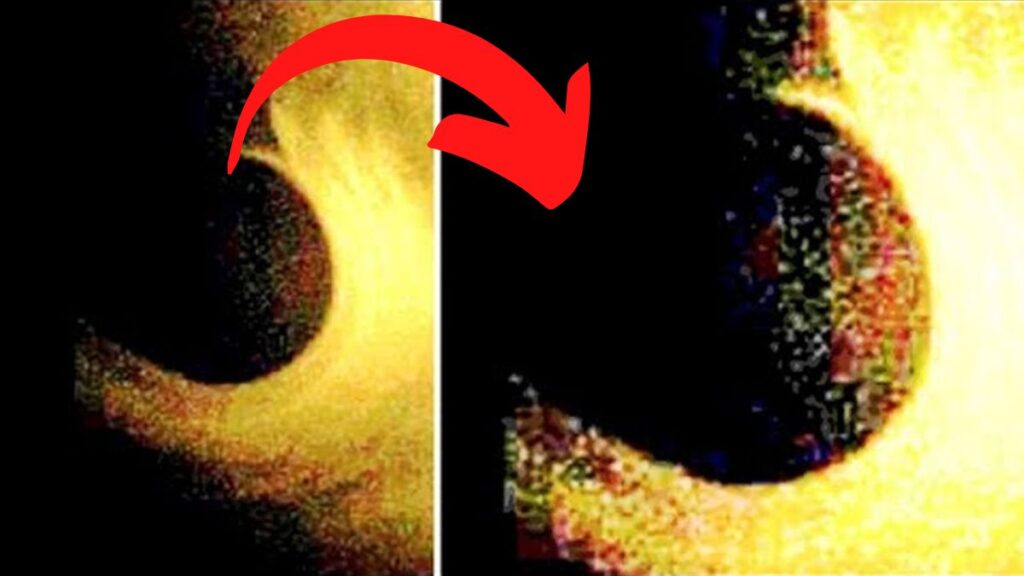
When was the last time you had a visitor?
How big was the visitor, and did they stick around for a long time?
The answer is probably no, but NASA says that a huge visitor to our solar system has just arrived and is speeding toward Earth.
This visitor will stay for decades.
What exactly is this newcomer to our solar system?
How big is it, and will it collide with our planet and destroy it?
Come along with us as we look at how NASA discovered a huge object in our solar system.
The universe around us is huge; However, determining its size is more dependent on one’s point of view.
The aphelion of the farthest planet’s orbit, the edge of the heliosphere, or, if you prefer, the farthest observable object can be used to define the diameter of the solar system.
The solar system has a diameter of 9.09 billion kilometers and a radius of 4.545 billion kilometers, as calculated by NASA.
The app treats the orbit of Neptune, the farthest known planet.
However, if further investigation leads to the promotion of the dwarf planet Aerys, this diameter may alter.
Sedna is the most distant observable object in the Solar System because it is three times farther away than Pluto and Earth.
The solar system has a diameter of 287.46 billion kilometers due to its distance from the Sun, which is 143.73 billion kilometers.
Although there are a lot of zeros, the solar system is 1921.56 AU in diameter and Sedna is approximately 960.78 AU from the Sun.
The distance between the Earth and the Sun is 1 AU, or 149,597,870.691 kilometers.
The assumption that the solar system’s diameter reaches the heliosphere’s edge is another way to look at its diameter.
The solar wind pushes against the interstellar medium in the heliosphere, which is a bubble at the edge of the region where the sun’s gravitational forces are greater than those of other stars.
The point at which the solar wind ceases and the gravitational pull of our Sun diminishes is referred to as the heliopause.
The solar system will have a diameter of 180 AU when this occurs around 90 AU.
As big as the entire solar system, the universe as a whole is quite small.
Outside the solar system, there are numerous objects, some of which occasionally enter the solar system and become our guests.
On October 19, 2017, the first ISO, or interstellar object, was observed passing Earth on its way out of the solar system.
A second Interstellar Comet, 2I Borisov, was found less than two years later and was easy to identify.
The conclusion that ISOs frequently enter our solar system was supported by previous theoretical work by the appearance of these two objects.
You might now be curious about the frequency with which these ISOs enter our solar system.
Is it something that happens often?
A recent investigation that was carried out under the direction of the Initiative for Interstellar Studies (I4IS) found that there are approximately seven ISOs that enter our solar system each year and maintain predictable orbits while they are here.
We may one day be able to send a spacecraft to meet one of these objects thanks to this research.
The discovery of Oumuamua in October 2017 brought about a revolution in astronomy and the study of celestial objects.
The discovery of 2I Borisov in 2019 confirmed what many astronomers had suspected: This was not only an object that was formed in another star system, but its arrival and detection also suggested a large population of such objects.
ISOs come into our solar system fairly frequently.
Nevertheless, the largest interstellar object ever to enter our solar system has done so.
The whole thing started in October 2014 when, in the Karma desert in Chile, a telescope pointed to the heavens and took a huge picture of the southern night sky, capturing hints of light that was reflected.
It would take nearly seven years for scientists to identify that odd light spot.
The comet, which was the largest ever observed with modern telescopes and was a massive primordial comet, was given the name Bernardinelli-Bernstein in June.
Researchers are currently attempting to learn as much as they can about this enormous visitor.
Pedro Bernardinelli, a postdoctoral researcher at the University of Washington, and Gary Bernstein, his advisor at the time, discovered the comet in the last few weeks of his PhD research at the University of Pennsylvania.
This is how the comet got its name.
Therefore, how big is this ISO?
The most recent estimates indicate that this comet’s nucleus is approximately 150 kilometers or 93 miles wide.
It would be more than 15 times taller if it were placed next to Mount Everest.
It is more than 15 times larger than the thing that hit the Earth and caused the dinosaurs to go extinct.
This is by far the most accurate estimate of a comet’s size in decades.
From 2014 to 2016, the European Space Agency’s Rosetta spacecraft orbited comet 67P/Churyumov–Gerasimenko, which was only two and a half miles across.
It basically moves from comets the size of cities to comets the size of islands.
The size of Comet Bernardinelli-Bernstein may even place it on par with some historical great comets, like a bright comet that entered the inner solar system in 1729 that appeared to be quite large.
But how were scientists able to determine this comet’s size?
It will not suffice to simply observe its brightness—the amount of sunlight it reflects.
This is due to the fact that a small, shiny comet can have the same brightness as a large, dark object from Earth.
As a result, the astronomers measure the comet’s thermal flux, also known as its output of heat.
They accomplish this by observing infrared light, which we can feel when the sun hits our skin but cannot be seen with the naked eye.
More sunlight is absorbed and then emitted by a large object.
Scientists were able to get a good idea of the comet’s size from these data and the object’s distance.
Additionally, this comet will persist for some time.
Over the next ten years, Bernardinelli-Bernstein will get brighter as it gets closer to the inner solar system and dive-bombs the planes of the planets’ orbits from below.
On January 21, 2031, it will be about a billion miles away from the sun, slightly further than Saturn’s average distance.
This will be its closest approach to the sun.
It will then begin the long journey back into the outer reaches of the solar system, where it will remain visible until at least the 2040s.
Depending on how much gas the comet releases as its ices evaporate in the sun’s glare, Bernardinelli-Bernstein could shine as brightly as Titan, Saturn’s largest moon.
A good backyard telescope should be able to see the comet in 2031 if this is the case.
This is going to be a blast for amateur astronomers.
On the other hand, Bernardinelli-Bernstein stands out because it was discovered so far from the sun.
The icy object is a part of the Oort cloud, a huge, spherical cloud of objects that thousands of times surrounds the sun.
Astronomers estimate that this comet will orbit the sun for millions of years because it is further out than Earth.
Since Bernardinelli-Bernstein was discovered while it was still more than 2.
7 billion miles away, it is a comet record because it was discovered so early.
Only three such long-period comets have been discovered on their way in from the Oort cloud.
It will be possible for a whole generation of astronomers to unravel its mysteries.
A highly sensitive digital camera that was installed at the 13-foot-wide Blanco telescope, which is part of the Cerro Tololo Inter-American Observatory and is located in the Atacama Desert in Chile, was the one that found Bernardinelli-Bernstein.
The Dark Energy Survey, a project that gathered 80,000 exposures of the Southern night sky from 2013 to 2019, used this camera as the primary source of data.
It was not looking for distant objects in the solar system.
Scientists’ understanding of dark energy, the mysterious force that drives the expanding universe, has changed as a result of this data set.
On the other hand, images taken to investigate dark energy and other cosmic phenomena can be used to locate objects much closer to home.
The objective of Bernardinelli’s PhD research was to locate previously unknown objects orbiting the sun beyond Neptune by utilizing images from the Dark Energy Survey.
Each image was so large that a grid of 275 HD televisions was required to display even one at full resolution, making this a very difficult task.
Bernardinelli searched tens of thousands of these images for tiny light dots.
However, shortcuts were discovered in the proverbial search for a needle in a haystack rather than an alley.
He wrote software that looked at the moving dots in the Dark Energy Survey images against the background of distant stars.
A final list of 817 newfound objects whose orbits did not match any known body in the solar system was produced after six months of laborious calculations and a cluster of 200 computers at Illinois’ Fermi National Accelerator Laboratory.
As a final step, Bernardino Bernstein has manually checked this list to make sure the code did its job correctly.
That’s when they first noticed it: a bright object similar to some 100-mile-wide worlds beyond Neptune with an extreme orbit that suggests it must have formed trillions of light-years away from the sun, similar to a long-period comet.
The Minor Planet Center in Cambridge, Massachusetts, which serves as the world’s official repository, received Bernard and Allen Bernstein’s comet evidence.
The center confirmed the object was a new discovery on June 19 and confirmed that it was a comet named Bernardinelli-Bernstein in honor of the duo.
The orbits of comets, asteroids, and other small bodies in the solar system.
Astronomers all over the world began pointing their telescopes at the approaching object and searching their archives for any previously unseen images of it as soon as the news of the comet’s discovery broke.
The comet was quickly discovered hidden in 2010-era archive data, enhancing the precision of its known orbit.
Despite being more than 2 billion miles from the Sun, multiple teams of astronomers confirmed within 24 hours of the announcement that the comet was emitting sufficient dust and gas to form a visible coma or tail.
noticing that comets don’t release much material until they get close to the sun’s heat, which causes frozen compounds to melt into gas right away.
However, Bernardinelli-Bernstein seems to have a lot of volatiles that make gas and start to melt even in the cold space beyond Neptune.
The pristine appearance of the object suggests that it did not spend a lot of time baking in the inner solar system in the past.
More details about the comet’s tail were revealed in images taken in 2018 and 2020 by TESS, NASA’s exoplanet-hunting Space Telescope, which also took pictures of the approaching comet.
The Comet appeared much brighter in TESS data than in Dark Energy survey images, which surprised me.
The team discovered that TESS pixels covered a much larger portion of the sky than Dark Energy survey pixels, indicating that the comet was ejecting a vast, highly diffuse story.
In an effort to identify the comet’s tail, Bernardinelli-Bernstein searched through the Dark Energy survey data and stacked numerous images of their namesake comet.
They eventually discovered that there was a very faint signal in their data.
However, no one is aware of where it passed.
The star’s gravitational pull on Oort Cloud comets is poorly understood because of this uncertainty, which could have significant implications for when Bernard and Ellie Bernstein last ventured inward and how close it came to the Sun.
Researchers discovered that we do not even know which side of the solar system HD 7977 passed through.
Additionally, the expected size of the comet may be altered by observations as it approaches.
The estimated distance of 93 miles is calculated using models of the comet’s dust and gas as well as its current brightness.
However, since incomplete models of a comet’s outgassing make the nuclear appear larger than it actually is, this method makes it difficult to calculate the comet’s size.
Nevertheless, one of the best aspects of Bernard and Ellie Bernstein is that they grant astronomers from all over the world rare luxury time.
Beginning in 2023, the veracy Reuben observatory in Chile, which has not even been opened yet, will be able to follow the object for at least a decade, if not more.
In the comments section below, let us know what you think of this massive visitor to the solar system.
Explore:

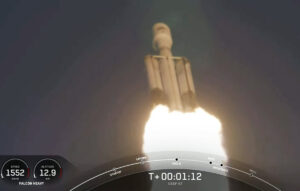



![Moon Jellyfish has [ Hidden Secrets ] You don't know moon jellyfish](https://spaceupper.com/wp-content/uploads/2022/11/1-1-300x169.jpg)
